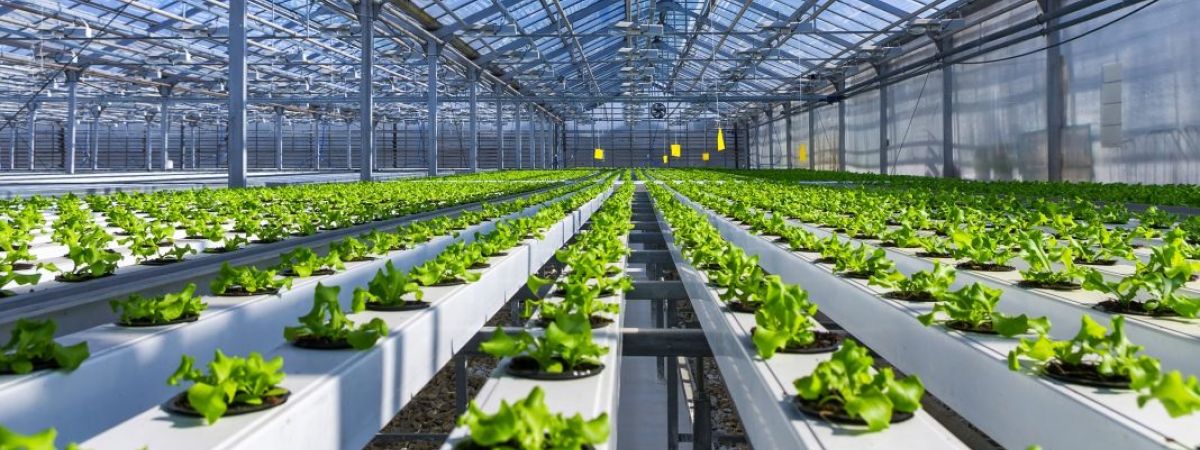
30 Reasons Why Hydroponics Is Taking Over The World
With the global population pushing 7.5 Billion people and land getting more and more scarce, we face a new question – “How do we continue to nourish the entire world?” In 2015, the El Nino caused a mass flood and led to massive hunger across Mongolia. They lost an estimated 80 percent of their crops because of drought and unpleasant conditions. What if we could save 100% of our food and grew it in our own homes or in enclosed regions?
Hydroponic plants are the reply to feeding our hungry and rising world population. Unlike traditional cropping in which a seed is dug into the ground, hydroponic plants have been grown almost completely in water located in a greenhouse or even on desktops – they are provided a source of nutrient-enriched water instead of soil.
Here we summarise all the benefits that come with hydroponics. You can see by the time you finish reading, that hydroponics really is as important as everyone makes it look.
INDEX
5. Reduces fossil fuel consumption
6. Easy switch to full-blown commercial activity
9. No more fungal infestations
11. Potentially solves the hunger crisis
13. Get started with very low budget
17. Fine-tuned climate control
19. Effective use of nutrients
22. Hydroponic herbs grow fast
23. Saves your back and your health
25. Grow a wide variety of crops
26. Unlimited upgrading possibilities
28. Can be done both indoors and outdoors
30. Rinse and repeat with no downtime
1. Takes less effort and time
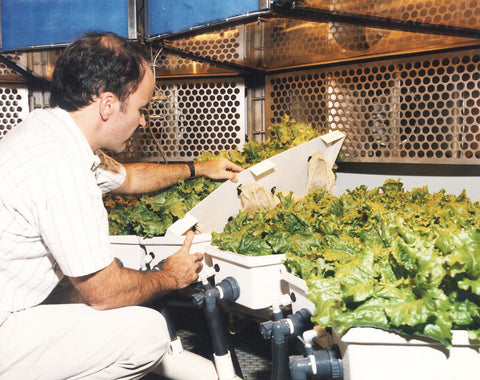
Gardeners love hydroponics since almost anything could be multiplied and there isn’t any back-breaking task involved: no tilling or raking. The labour involved in up fixing and keeping the crops is decreased significantly. There aren’t any weeds to pull, no toxic pesticides. No moles or cutworms consume your roots, and many insects leave your fresh and wholesome plants alone
- Freedom from daily plant support activities. Hydroponics needs much less personal attention than traditional gardening.
- Ability to have a two week winter holiday and not be concerned about the care and feeding of your herbs and plants.
2. Serious Space saving
Perhaps the most critical advantage of hydroponics is the possibility of being set up in big metropolitan cities where fresh fruits and veggies can be tricky to come without hydroponics. Is not limited to farmers or people with a great deal of space and cash.
Hydroponics is the best method for the hobbyist home-owner or flat dweller who does not have adequate time or room for full-time soil gardening. In late summer and spring, your mobile hydroponic unit could be placed outside on a balcony or porch where natural sun helps create tremendous yields of anything from lettuce, to cucumber, to zinnias. In the winter, the device could be transferred anywhere inside the house, even in the basement, where your crops will prosper and continue to grow under artificial lighting.
3. No soil needed, literally
Plants really like to grow in hydroponics, since their roots do not need to push heavy, chunky dirt to compete for nourishment. Rather, this system exerts nutrients evenly on every plant. Thus, everything develops beautifully and quickly. Hydroponic plants grow quicker, ripen sooner and contribute to ten times the return of soil-grown plants.
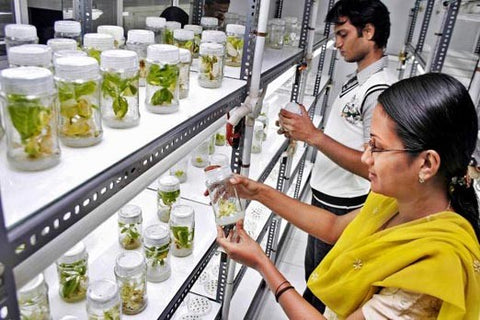
These fresh and manicured plants create vegetables and fruits of excellent nutritive value and exceptional taste. Many of these, particularly colloidal tomatoes and cucumbers, are offered from the sections of supermarkets at substantially higher prices than normal vegetables. The purpose here is you could grow exactly the very exact veggies for less money than it costs to purchase the pulpy supermarket type.
4. Hydroponics Saves our environment
More Eco-friendly – Soil erosion is only one of the issues related to traditional farming. The land has become so rare that we’re touching the world’s reserves of woods, only so we are able to keep on growing food to the Earth’s ever-growing human population.
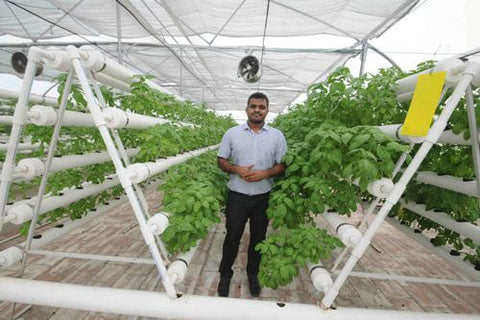
Clearly, you still need to have a tiny land when you do hydroponics. However, unlike traditional farming, the total amount of land required for hydroponics is significantly less. A lot more could be carried out with hydroponics in a little space when compared with conventional farming.
And, since it doesn’t demand dirt, hydroponic growing clinics may be utilized in regions with harsh climate and small fertile soil, such as from the desert.
Furthermore, there are various sorts of hydroponics installations. You are able to blend aquaculture and hydroponics and think of an aquaponics system which creates not only blossoms, fruits, and veggies, but also fish.
The quantity of time required to develop several batches of crops will be precisely the exact same period required for fish to grow to plate-size. Just imagine the possibilities of employing hydroponics to commercial-scale farming of vegetables, fruits, and other plants.
5. Reduces fossil fuel consumption
Food is sent all around the world to areas where agriculture is impossible or hard — or where specific foods can’t be grown because of shorter growing seasons. With hydroponics, you are able to develop these foods locally!
Additionally, hydroponics takes around 50 percent less land to grow the exact same number of plants: Leaving more property for different uses like wildlife reserves and additionally growing even more trees, which might otherwise have been cleared for agricultural purposes.
6. A possibility of full-blown commercial activity
Today the hydroponics industry is a niche food production market, especially if you compare its characteristics against traditional agriculture. According to the EPA, the total US crop production is worth $143 billion, while US hydroponic revenue has been estimated by IBIS to reach just $607 million.
Regardless, the US hydroponic industry has grown at an annual rate of 3.6% in the last five years, faster than the growth the US GDP in the same period. Revenues in the sector will continue to increase in the next five years. This will continue as a worldwide trend.

7. Safe for the grower
No contact with harmful chemicals – Hydroponics involves zero use of pesticides, fungicides and other harmful chemicals. So the farmers are specially protected and do not get exposed to even micro-doses of such harmful chemicals.
8. Easy on your pocket
No more failed crops ever – While veggies grown in dirt expend most of their power to come up with a root system which could reach out in a continuous search for oxygen, nutrients, and water, hydroponic farming makes it possible for plants to concentrate on the blossom and fruit development.
Hydroponics helps growers to maximize the source of air, nutrients, and water into the root system, thereby paving the way for plants to grow at rates never previously found in traditional cultivation. There are zero failed crops and seriously good success rates with hydroponics.
9. No more fungal infestations

Since most fungi and infectious agents are soil-borne, growing vegetables in water dramatically reduce the exposure to such dangers. To ward off those dangers, experts propose some common-sense preventive steps.
Steps include using only sterile tools and gardening gear in starting a hydroponic job and ensuring that everything is sterile during the crop-growing procedure. The decreased threat of infestations permits hydroponic farmers to lower their use of chemical agents, making vegetables with minimal exposure to substances.
10. No more pests and pesticides
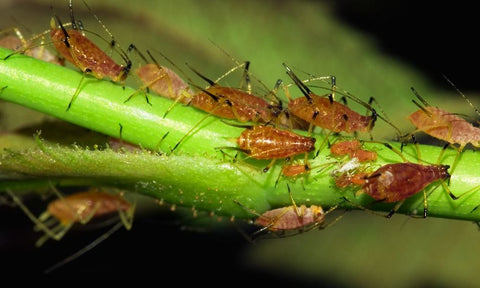
In traditional farming, two types of sprays are employed: pesticides and insecticides.
Herbicides are sprayed to kill unwanted plants (these are usually known as weeds), whereas pesticides have been employed to control pest insects.
The spraying of insecticides and pesticides do good damage to the surroundings:
Pesticides could be hauled away by rain, contaminating nearby ecosystems. And, pesticides not just poison the insect, but may possibly poison other creatures too.
With hydroponics, the bugs are gone because the environment has changed. The system is as sterile as it gets. You no longer need to be subjected to pesticides. Isn’t that great for your health?
11. Potentially solves the world’s hunger crisis
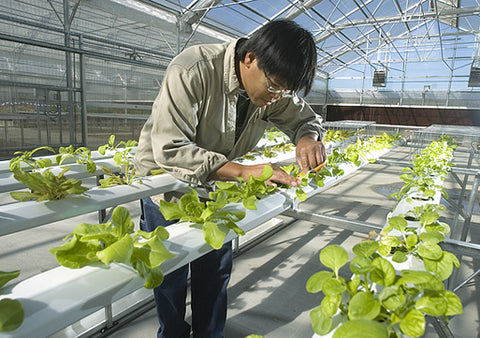
UNICEF says that a lot of the populace of this planet – one in four people – lives on less than $1 per day in US dollars. The World Health Organization notes that two-thirds of the whole population on Earth is under-fed or hungry. That can be due, in part, to debt, decreasing prices of these plants grown in these areas, and even war and drought.
Hydroponic gardening is provided as one of many answers to the urgent situation and clearly has a positive effect on the issue. Hydroponic gardening, also a sort of indoor gardening that doesn’t require soil to get a planting medium, provides a way to food production in areas of the world where sufficient food cannot be grown.
12. No need of weeding
Are you aware of the time farmers invest in combating weeds? Frankly, it is a lot. Weeds harbor insect and pests which carry diseases.
Weeding is among the most common back-breaking and time-consuming activities if you are growing plants in soil. The best method to control weeds without chemicals is to prevent them from establishing themselves.
With hydroponics, there are no seeds from different, unwanted plants in the growing medium so there are no weeds to fight in your harvest.
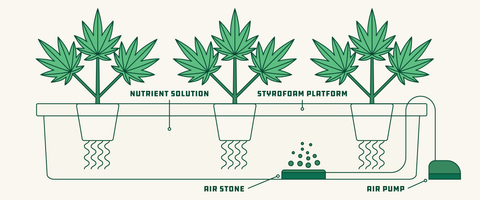
13. Get started with a very low budget
When we consider developing plants hydroponically, the very first thing often comes to mind is the need to purchase a great deal of expensive gear and nutrient media and whatnot. It may appear overwhelming and expensive. But growing plants hydroponically does not have to be pricey. In fact, it may even be less expensive than developing them in the dirt.
How is that possible when all is really expensive? The same way you do not require a $250,000 car to drive to work each day. That is fine when you’ve got enough money, but a lot of people don’t. And rest assured, you can definitely begin with hydroponics without having to spend a lot of money.
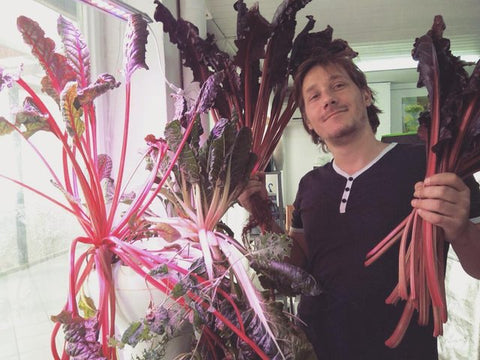
14. More Nutritional and Tastier Foods
Want fresher fruits and herbs? Leave dirt behind. Advocates for hydroponics and urban farming methods have touted the advantages of closeness, freshness, quality, and development of local job creation.
“For certain plants, hydroponics could be a blessing,” explained John Magazino, the president of Primizie Fine Foods from the Bronx, an upscale create supplier which has sold hydroponic plants from non-urban providers to restaurants such as Eleven Madison Park and Blue Hill at Stone Barns. Lettuces, chicories, endives and the new herbs do exceptionally well. And when Gotham Greens can develop chervil, which is not easy to develop and does not transfer well, they will earn praises from lots of chefs.
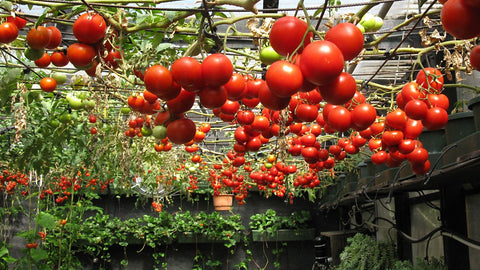
This interest will place you back. You begin to love when it is time to put everything back and check your hydroponic garden. You are able to grow fresh, tasty veggies, or key herbs in your little closets, or on your desktops and revel and relax with your small green spaces.
15. Grow neat and pure hospital-grade food
Hydroponic farming allures people due to ecological issues, as it uses less water also needs minimal fertilizers or pesticides compared to conventional farming methods.
Consuming a diet high in fresh and organic vegetables may enhance your health, regardless of whether the veggies were or hydroponically grown. A diet lowers the risk of stroke, type 2 diabetes and some kinds of cancer.
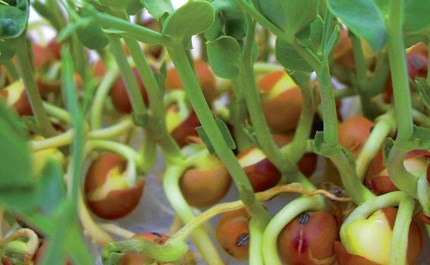
16. You can automate virtually all of it
Growing certain vegetables and plants in distant regions such as deserts as well as the south and north pole can be challenging due to the extreme weather. Not many species of plants flourish in such instances and are often used as a food supply. Companies like Herboponics have made systems which can grow common vegetables and plants and can function without being affected by the exterior climate.
We achieved this by employing programmed Hydroponics. The smart garden is automatic by using microcontrollers and sensors to stay human intervention in a minimum. A Web of Things (IoT) system was made to boost reliability and permit remote observation and control if necessary. You simply need to plant a seedling and set initial parameters. After done, the machine can keep watering the plants timely and encourage nutritious plant growth.
17. Allows fine-tuned climate control
Hydroponics, whether it’s a garden setup or indoors setup, enables you to make an oasis of vegetation, nestled inside a comfy and productive atmosphere. While this might appear relatively simple, climate control inside a hydroponic garden is a bit more complicated than just providing four walls and a roof.
A plant’s environment contains four chief elements which influence development and growth: light, temperature, gasses (carbon dioxide and oxygen), and humidity or moisture levels at the main zone and atmosphere surrounding the leaves. Hydroponics allows for control of all these factors, thus giving you extremely controlled micro-climates.
18. Hydroponics is water-saving
Plants grown this way use just 10 percent (or lesser) of water when compared with field-grown types. Water can be recirculated. Plants can take the essential water, whereas run-off ones will likely be recorded and go back to the system.
Water reduction only happens in 2 types – flow and flows from the machine (however an efficient hydroponic installation will decrease or do not have some leaks). Although water will become a crucial problem in the future once the food generation is predicted to grow by 70 percent based on this FAQ, Hydroponics can be regarded as a workable remedy to large-scale food generation. It’s projected that agriculture utilizes around 80 percent water from their floor and surface water in America.
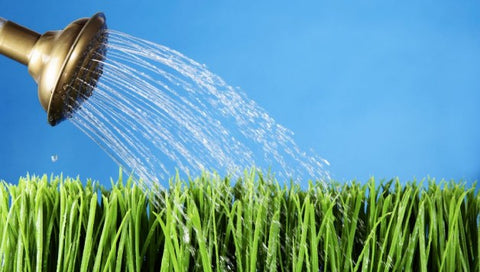
19. Effective use of the nutrient medium
In Hydroponics, you’ve got a 100% management of those nutrients that crops need. Prior to planting, growers will assess what plants need and the particular quantities of nutrients required in particular phases and combine them accordingly. Nutrients are stored from the tank, therefore there aren’t any losses or modifications of nourishment like they’re in the dirt.
20. Perfect control over food pH
Each one the minerals are present in the water. This means that you may quantify and fix the pH amounts of your water mix, a whole lot more readily in contrast to soils. This guarantees the right amount of nutrients uptake for the crops.
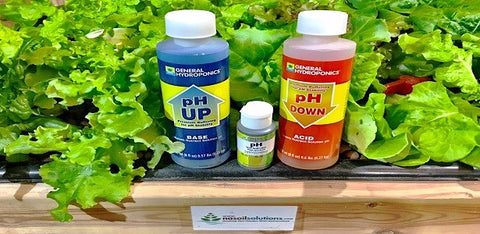
21. Get Year-Round Supply
Anyone can make plants grow out in the summer, however, you’ll realize your hydroponic plants can outgrow and outproduce their own soil-bound cousins. That is partly because they do not need to expend a good deal of energy sending roots to find nourishment; therefore, they’ve got more energy for climbing. Hydroponics provides you another advantage over field gardeners.
They cannot go away on holidays when the fantastic weather comes without organizing to the watering and bustle of the gardens. In case you’ve purchased or built-in semi-automatic system which waters mechanically, off you go. When it rains or not, does not matter, throughout the winter months, your garden will create berries, avocados, lettuce and whatever other healthy green foods that you select. Also when their price is highest in the supermarkets along with their organic sugars that are needed for you.
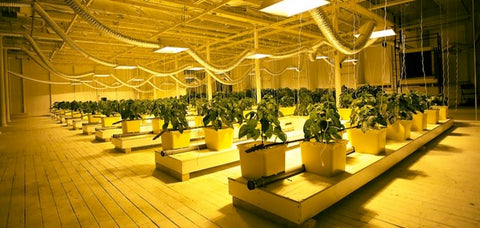
It is a cheery sight to view that your veggies, flowers, and herbs sitting fat and happy below a glowlight, a few ready for harvesting, even once the snow is blowing out. Bear in mind, your plants and planters will behave as ordinary humidifiers for your humid indoor air. In spring, you could transfer your mobile hydroponic unit outside again on a balcony, terrace, patio or to a greenhouse to have a whole advantage of sunlight. Since you’ve started your garden inside under lights, also since it’s from the assortment of spring ground trickle, you may get your very first yummy noodle curry two months sooner than your dirt-farming neighbors.
22. Hydroponics Herbs Grow Fast
In hydroponics, you’re your own boss who controls the entire atmosphere of the plants’ development – lights, temperature, moisture, and notably nourishment. Plants are put in perfect conditions, whereas nutrients are supplied in adequate quantities, and come to immediate connections with all the root programs. Thus, crops no longer waste precious energy looking for diluted nutrients from the soil. Rather, they change all their focus on producing and growing fruits.
23. It saves your back
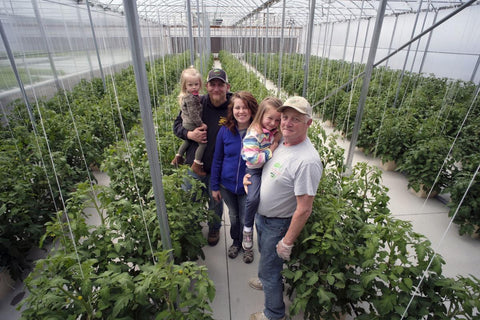
No year-round squatting along with spending fewer efforts on tilling, watering, cultivating, and fumigating weeds and insects, you’ll have more time saved since the plants’ development is demonstrated to be way higher in Hydroponics.
When agriculture is intended to become technology-based, Hydroponics includes a substantial area within it. Also, hydroponics can prove friendly on the pocket as they can be grown away from their natural habitats and closer to consumers, reducing transport emissions and providing people with fresher goods.
24. It is highly scalable
Hydroponic farming focuses on the growth of plants on a mass scale with a hydroponic system. It is not competing with conventional agricultural farming at the moment, its prevalence and potential haven’t gone unnoticed. The following is a scalable diagram of a simple hydroponics system.

Recent technological advances, in conjunction with social consciousness, are bringing hydroponics to the mainstream. As consumers pay more attention to their own food resources, hydroponically grown food has a fresh capacity to develop into a legitimate competitor with conventionally grown plants. This system can be scaled highly – vertically, above everything else. This has limitless possibilities for the future.
25. You can grow a wide variety of crops
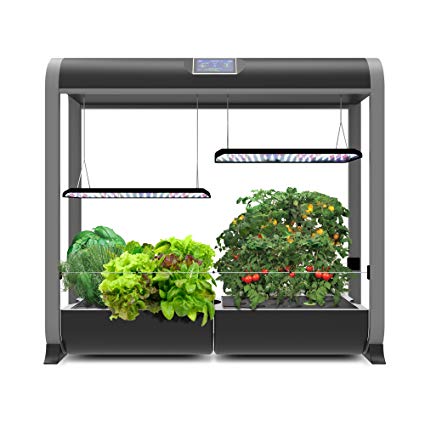
Basically, all high-value and cash crops can be grown via the hydroponic system. Popular in South Africa are tomatoes, cucumbers and peppers in a drain to waste systems and lettuce and herbs in gravel flow systems.
26. Unlimited Upgrading Possibilities
As we mentioned before, there’s literally no limitation when it comes to scaling your system.
It is not simply the size of these tanks which you may improve. At any time you discover a failure in the system or something which may be made better, there’s always a layout or a bit of technology which you could use to adjust the equation and raise the potency of your system.
Always consider hydroponics as an integrated platform, with elements affecting one another.
27. You can teach kids about nature
Kids love taking charge of the hydroponics growth factors when they are in a position to change and experimentation with a Herboponics Hydroponics setup. Students can create different growing environments by choosing to change the temperature or the length of the light.
They can even explore with various species, such as if educators wish to discuss ancient agriculture, they can use some ancient programs known for developing corn and quinoa whilst investigating the cultures where they originated. The kids could even plug in species such as coastal coastal saltwort to make an ocean-like surrounding and find out about sea pollution. Hydroponics can be used as the point where distinct worlds may unfold and tales could be told with plants.
We recently conducted a classroom program and taught kids about Hydroponics. After some time in the classroom together with all our Smart Garden units, a 5th grader from Nevada Started to identify the crops with a grin and whispered,
“I want to consume the lettuce!”
Another gratifying answer came out of a Boston pupil who only stated, “Mind. Blown.”
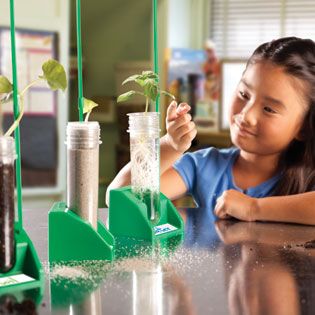
We want to strike a balance that is suitable for the development of children and takes care of the food production of the future. One of our large open questions is, ‘In this time of smartphones, video games and instant gratification, are children really likely to get excited by a slow but amazing food growing system?’ The answer is yes.
What kids see is not just a digital plant which only pops into existence, it is not Pokemon. Children get a feeling of ownership and love the incremental adjustments we make to a hydroponics system. Fresh foliage is intriguing, a new branch, even if something finally comes to blossom they see that it has been worth the wait.
28. Hydroponics Can be done both indoors and outdoors
With the debut of commercial hydroponics along with other soilless procedures of farming, indoor farming has gained a great deal of traction. There a lot of areas where it isn’t easy to grow plants because of harsh climatic conditions. The most important impediment to farming inside is the shortage of sunlight needed for plant development. With the advent of hydroponics, you can grow inside where there isn’t any access to the sun – you’ll just have to use lights.
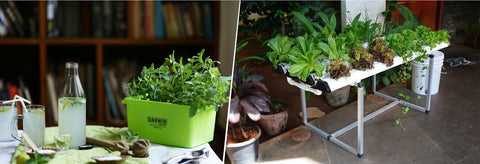
The exact same hydroponic system that you would use to grow outside can be moved inside and grown with artificial lights. Growing inside or outside with hydroponics requires more or less the exact same sort of maintenance. The main drawback of developing outdoors is that you are confined to picking crops that will grow well in your existing climate. Your crops face the danger of fungal and pest attacks. Indoor growers do not confront these problems.
Both approaches of Hydroponic farming also have their own limits. While outdoor hydroponic farming is more economical, it’s subject to climate and might fall prey to insect attacks. Indoor hydroponic farming is costlier but gives you more control of your plant’s growing states. You can achieve faster and better expansion. Have you tried either of these? Tell us which works best for you!
29. Hydroponics Gets You High Yields
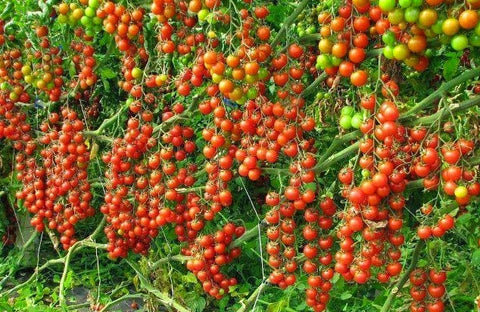
More crop cycles in the same time period – While indoor growers get the advantage of yearlong harvests, they could still lose valuable time when their system is vacant between harvest cycles. This is known as downtime, and even to indoor farmers, it signifies a significant gain element.
This can easily be overcome by always being well prepared, planning ahead of time, and understanding the things that impact crop timing. When you want your hydroponics setup to keep giving, you have to simply be prudent. There are two principal factors that impact crop timing–system cleanup and harvest cycles. These are easy to understand and follow and are a huge gain over traditional farming.
30. Rinse and repeat

Literally, rinse your hydroponics equipment and repeat the growing process as many times as you want. No soil quality degradation involved. Growing your own food by using hydroponic gardening methods provides many benefits. You will yield a load of plants. The indoor environment provides your plants a safe sanctuary where perfect growing conditions can be gained.
After every grows, you can clean your hydroponics system up and get fresh conditions again. No loss of any sort. Cleaning the system involves sweeping, eliminating dead plant material in the machine, and maintaining your crop and planting areas tidy and well-prepped.